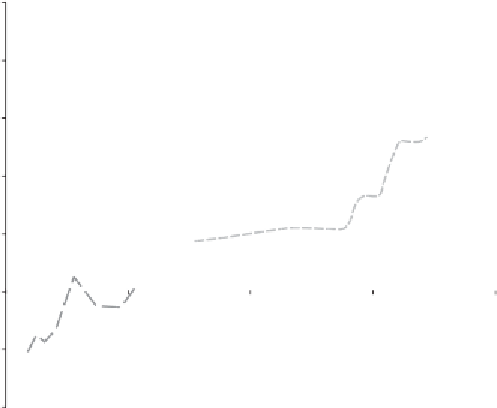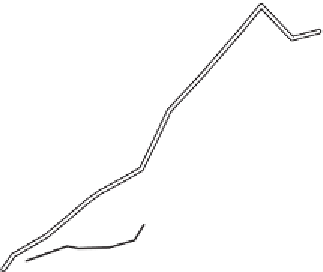Agriculture Reference
In-Depth Information
250
200
Korea
150
Japan
100
Ta iwan
50
0
7
8
9
10
11
ASEAN
In GDP per capita
-50
India
China
-100
Figure 14.9
Relative rate of assistance to agriculture and log of real per capita GDP, large
Asian economies, 1955a to 2004
a The starting dates are 1965 for India, 1970 for ASEAN and 1981 for China, due to lack of RRA estimates for
earlier years for those countries. The GDP per capita data are in 1990 international Geary-Khamis dollars, from
Maddison (2003).
Source: Author's derivation from data in Anderson and Valenzuela (2008).
and relying on more efficient domestic policy measures to raise government revenue
(e.g., income and consumption or value-added taxes) and to assist farm families (e.g.,
public investment in rural education and health, rural infrastructure, and agricultural
research—see Fan 2008). Even if just one-twentieth of the current NRA provided to
Asian farmers via farm price-support policies was replaced by agricultural R&D expen-
diture, that would more than double their current public spending on R&D—and the
latter would increase economic welfare, whereas price-distortionary policies reduce it.
Such a boost to Asian R&D could generate another green revolution of the same order
of magnitude of the one in the 1960s, especially if it took full advantage of the new devel-
opments in biotechnology (as shown for rice, for example, in Anderson, Jackson, and
Nielsen 2005). The example of Brazil's R&D-led agricultural revolution over the past
two decades also points the way for others to follow, not only in Latin America but also
in sub-Saharan Africa—where again the potential for yield and food-quality improve-
ments via transgenic crop development is enormous (Anderson and Jackson 2005).
In short, the world's food price and trade policy biases are still very wasteful of
resources. They lead to food production occurring in higher-cost settings than is nec-
essary, and they contribute to global poverty, to income inequality between countries,
and to income and wealth inequality within rural areas of protective countries. Yet
the historical data summarized above indicates that these policy biases have declined
somewhat over the past quarter century. Thus, even though it may seem like farm sub-
sidies and import protection are fixtures too politically difficult to move, this evidence





Search WWH ::

Custom Search